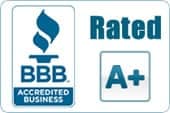The P-trap at the bottom of a toilet bowl is designed to hold water. This water acts as a barrier, preventing sewer gases and odors from entering your bathroom. When you flush, however, your toilet bubbles or gurgles. This indicates that the septic tank is overflowing or that the drain line or vent stack is clogged.
As a result, the pipes experience negative air pressure, which is forced out through the water in the toilet bowl in the form of air bubbles, accompanied by a gurgling sound on occasion. A gurgling or bubbling toilet should be repaired as soon as possible because it may indicate a more serious problem.
If your toilet bubbles when you flush, this means that your waste is not properly discharging and is accumulating in the drain or sewer line.
A backup will occur if a toilet that bubbles when flushed is not promptly repaired. A backup occurs when waste returns to your toilet, bathtub drain, sink drain, or any other drain in your home instead of being routed through the city’s sewer pipes.
A gurgling toilet could be caused by a variety of factors. A gurgling toilet, on the other hand, is caused by a buildup of pressure in the plumbing system.
Here are some of the reasons why a toilet bubbles when flushed:
Here are some of the reasons why a toilet bubbles when flushed:
Clogged Toilet
When you flush the toilet and it begins to bubble, the toilet may be clogged. Toilet bubbling is frequently caused by a blockage. This is usually caused by an accumulation of unflushable materials or excessive trash. If there is a blockage in your toilet, you will most likely be able to detect it. Floating objects in the water could include paper towels, toilet paper, or other items.
Toilet clogs don’t always cause a significant overflow; sometimes, the only sign is a few random bubbles. In any case, toilet blockages must be resolved as soon as possible. These could accumulate and cause more harm over time. Toilet gurgling is an obvious sign of plumbing problems, such as clogged buildups.
Prevention is always preferable to treatment when it comes to blockages. To ensure proper hygiene, only flushable items should be used in the toilet! Keep in mind that feminine hygiene products and wet wipes belong in the trash, not in your plumbing.
Blocked Vent Stack
Your roof vent pipe provides ventilation for your plumbing system, which is necessary for proper operation. Proper ventilation keeps the critical air pressure constant. A clogged vent stack is the most common cause of gurgling sounds.
If the vent pipe on your roof becomes blocked, your plumbing system will no longer be able to manage the pressure as it should. Furthermore, if the vent pipe is blocked, no additional air can escape.
A clogged vent pipe can be caused by a variety of factors. For example, if you’ve recently had bad weather, the vent may be blocked by a buildup of snow or other debris. Grass, mud, and leaves can also find their way inside.
Fortunately, unclogging a clogged vent pipe is simple. Cleaning the vent pipe is simple, even if you must climb onto your roof. If you don’t know how to handle this plumbing issue, you can hire a team of professional plumbers to help you clear the clogged vent stack.
Clogged Drain Lines
Drain lines connect your home’s drain system to the mainline. All of that waste is carried to your home’s main sewage drain pipe connection via the main line. A clogged drain line is easily distinguished from a mainline issue.
Clogged drain pipe issues are limited to a single room in your home, such as the bathroom fixtures.
For example, if there is a blockage upstairs, the downstairs area will be fine. However, mainline impediments affect your entire house. Clogged drain lines are caused by the same issues that cause clogged toilets. Similarly, the same toilet gurgles and bubbles are caused by the same blockages, which create the same negative air pressure.
If the clog is deeper down the drain line or mainline, it may be more severe because it is out of reach of consumer-grade tools and equipment.
You may notice a variety of plumbing issues, such as a toilet that refuses to flush properly or water backing up into the shower. This is where you should contact a plumber. Garbage and tree roots can also cause a clogged mainline. A drainage system’s wetness and warmth can attract roots, which can then slither through gaps or loose joints.
After consuming the resources found there, the roots will spread, causing a blockage. There is a significant plumbing system problem here that must be addressed immediately.
Residue Buildup
If calcium and other deposits have accumulated over time, your toilet may bubble after flushing. Also, if you don’t clean your toilet bowl on a regular basis, residue can build up in your pipes and cause havoc.
If your water contains calcium, magnesium, or iron, residue buildup could cause your toilet to gurgle. First, inquire whether your neighborhood has soft or hard water. Because hard water contains a high concentration of magnesium and calcium, it is more prone to residual clogs that cause a toilet to gurgle.
If these elements are present in high concentrations, your water may calcify. This results in solid mineral deposits that build up over time and cause blockages.
Furthermore, this residue may begin to corrode your pipes. If you suspect calcification and residue accumulation in your toilet, contact a plumber. They can give you advice on how to remove the residue and whether your pipes need to be replaced.
How To Fix A Toilet That Bubbles When Flushed
Deep Cleaning The Toilet Bowl
If you believe the gurgling is caused by a buildup of residue, spend some time thoroughly cleaning the toilet bowl. Cleaning the toilet is an easy task that should be done monthly or twice a year.
Remove all calcium deposits and visible residue from the bowl. To clean and sanitize the bowl, use a toilet bowl cleaner or diluted bleach. A cleaning session may be able to stop the bubbling and gurgling in some cases.
Unclog The Toilet With A Toilet Plunger
A toilet plunger is used to unclog toilets. The clog is drawn into the drainpipe by creating a pressure difference between it and the bottom, where the force beneath the clog is less than the applied pressure.
A plunger removes the clog by sucking it into the bowl. Invest in a high-quality plunger that fits snugly over the toilet’s hole to create a tight seal.
To properly plunge, place the plunger on the toilet opening and take a soft first plunge. Push forward forcefully once properly engaged; ideally, the obstruction will be removed and the toilet will stop gurgling. Following that, flush the toilet and listen for bubbles or gurgles to see if the problem has been resolved.
Check And Unclog The Vent Stack
You don’t realize the importance of a vent until sewage gases back up in your bathtub drain, kitchen sink drain, or a toilet that bubbles when you flush it. As a result, the entire house or some of the rooms will smell like a sewer.
A ladder can be used to reach the top of your home’s roof and unclog a clogged vent stack. But first, determine whether you can reach the obstruction with your hand or see it from above. Sometimes it’s just some dry leaves or dead rats that have been caught.
If you can’t see or remove anything with your hands, use the garden hose to spray water down the vent stack. Water and gravity will flush the clog down the drainpipe.
Use A Toilet Auger To Unclog The Toilet
When it comes to unclogging toilets, the clog is broken up into tiny pieces or pulled out with the help of a toilet auger. In contrast to a plunger, a snake enters the toilet trap and travels into the drainpipe, where it acts directly on any blockages that are within reach.
Although most toilet augers are 3 to 6 feet long, professional plumbers frequently use motorized augers that can reach lengths of more than 100 feet. Contact a plumber if you are unable to clear a clog from a toilet with a standard auger. The plumber may need to remove the toilet if the obstruction is too deep in the drainpipe.
Call A Plumber
Because experience is so important, your plumber will charge you at least $150 to fix the problem. If you can’t seem to solve the problem, it’s a good idea to call in a plumber because they’ve dealt with similar problems before and have access to tools that you don’t.
Why Choose Our Plumbing Services In San Jose, CA?
Contact Allstar Plumbing if you need a plumber in San Jose, CA who does high-quality work at a reasonable price. We are experts at retaining long-term customers because of our excellent customer service and competitive pricing. We have been in business for many years and offer excellent service. Contact us if you have a simple clog or a more serious problem.




